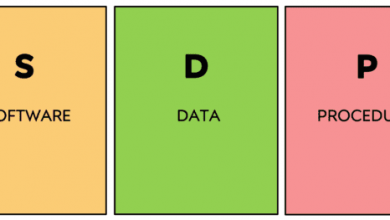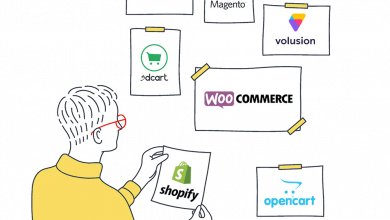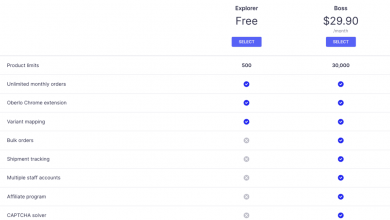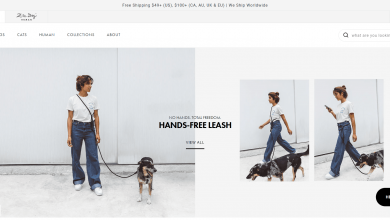7 Ecommerce Content Marketing Examples to Learn for 2022
There are many reasons why you might want to do content marketing for your brand:
- Improve your SEO presence by driving more backlinks and traffic to your site.
- Expand brand awareness and become an authority in your niche.
- Start conversations with potential customers and generate leads.
- Feed your sales pipeline with qualified traffic.
- Create an authentic relationship with your audience.
But as a business owner, you need to know what a successful business looks like if you want to replicate its success.
Content marketing has become more popular over the years and 71% of B2C brands have a content marketing strategy. I have collected the best content marketing examples from all types of e-commerce businesses.

These examples do a great job at branding, SEO, sales and building trust. So if you want to drive your content marketing strategy in the right direction, keep reading.
Example #1 Bloom

As an online store that sells skin care products, Bloom knows the pains and needs of its target audience, including dry skin, acne, and more.
And you can tell that this is true from the type of content they create. The content speaks directly to an obvious but easily overlooked pain point – insecurity.
You see, it can be easy to write content about their best anti-acne products or exfoliating tips. But dealing with an emotional pain such as acne insecurity makes this example stand out.
Customers buy from emotion first and logic second. So hitting the most sensitive areas is a surefire way to help them make the right buying decision.
You can do the same if you conduct customer research in the right way by maintaining a good relationship with your customers and caring enough about their problems.
With great customer research, no longer struggle to come up with content ideas.
Example #2. JOI

Selling almond paste would be incredibly boring if it weren’t for JOI’s dedicated mission to help people adopt a dairy-free diet and make the planet cleaner.
The content adds to his efforts to make the mission a reality. Sharing endless amounts of dairy-free/vegan recipes and teaching how their products are made with 100% California nuts.
The results are clear. Suddenly you want to take their questions, start following these recipes and try their delicious almond milk yourself – even if you’re a vegetarian.
Imagine if the JOI website was just a single product page with no logo or compelling message. The branding and valuable content are what do the heavy-lifting in their success.
JOI is a great example of how branding and content marketing can work together to produce results greater than the sum of its parts.

Bow Wow Labs sells chews and treats for dogs of all breeds, including a premium product that prevents dogs from swallowing dangerous sticks.
With a special focus on keeping your dog safe, the content will appeal to dog owners who want to learn how to properly care for their pets. Covering topics like the best foods, recipes, safety tips, and more.
This content makes the audience concerned about the well-being of their dog—a “bully friend” at the store—and makes them more likely to buy healthy treats.
The reason it works is that it focuses on addressing a specific pain point that hits an emotional button in your audience—which is more than just writing about dogs and mentioning your products everywhere.
You can learn from Bow Wow Labs how to focus your entire content strategy on touching *one* pain point (hence the importance of customer research).

Smooth Services is an online skin care store. Selling products such as clays, care creams and soaps for any skin treatment you may need.
However, knowing how your skin works, what type of problem you have, and which treatment to choose can be tricky—which is why the website has created content that addresses these issues.
Instead of creating a blog, Soft Services has a “mass index” page that compiles a variety of articles covering different concerns like body acne or dry skin – all written by professional contributors.
The texts are designed to immediately display a table with important information about a particular symbol. And then explain its meaning, causes, treatments, prevention, and related articles (and products) – simulating the same effect as Wikipedia.

This content is not necessarily aimed at attracting traffic from SEO or going viral. The goal is to educate anxious viewers about their concerns and build enough confidence to make an educated purchasing decision.
To do the same, all you have to do is genuinely help your audience, by thoroughly researching their problem and your solution. Also providing good user experience and writing clear content.

Soul Insole is a foot care brand that sells shoe insoles and other accessories to alleviate/prevent foot problems such as plantar fasciitis or overexposure.
Foot health is very complex and predictable. So it’s hard to see the value in heel supports and insoles if you don’t understand the basics.
Bringing Sole Insole to create an education center, so visitors with foot problems can learn about their problems and do something about them.
Content covers a variety of foot ailments, exercise video tutorials, product FAQs, and an ever-expanding blog about foot health.
The goal is simple: make their audience aware of their problems so they can take action (and buy a product).
Where people aren’t aware of potential problems or opportunities for improvement, you must take the same approach to building a consistent customer base that understands and loves your products.

Burrow is a very professional brand with a wide variety of custom furniture for your home, a catalog tailored to suit your needs, excellent customer support and an active community to bring you ideas.
Burrows must build an audience inspired by ideas, guides, and engaging stories as they look to innovate in their industry.
Their content marketing includes conversations with experts, furniture guides, insights and decorating ideas. They even have an “inspiration” page that shows different themes and recommends the furniture shown in the images so you can “shop the look”.

What is most impressive is the format they use in their content. Instead of following a fixed margin and centered text, the content is divided into blocky sections – like a landing page style.
But not every post is a clear guide to decorating your home for Christmas. There are many stories from people in the decorating business, such as this conversation with Jasmin Ark telling the story behind her fake cake business.
Inspiration may be all it takes to engage an audience with your products, and that’s exactly what has been working for Buro.
So if you want to stand out, try diversifying your content with real life stories from your customers or key influencers rather than how to direct your content in a clear way.

Beardbrand is a popular grooming brand that sells men’s beard, hair and fragrance products.
The brand is based on its content marketing method—a pretty classic blog that covers all things hair/beard style and maintenance.
They do not miss the opportunity to show the use case for their products in each post and present it in front of their readers when necessary.

Plus, it’s not all about the best Hollywood beards of 2021. The blog is dynamic and includes factual content such as their experiences after going no-poo for two weeks. It even has three questions you can take to find the right product for you.
But if you scroll through their blog a bit, you will find that there are 76 pages full of such content, which shows that they have been doing it consistently and for a long time.
You see, content marketing is a long-term game. It rewards those who invest in consistently and consistently creating content.
In fact, the main reason businesses outsource content creation is to expand their product. Because if they don’t, they will lose interest and eventually become irrelevant.
So if you want to achieve the same success as Beardbrand, think about the years and constant effort you have to invest. Understand how much your content is worth to you.
What can these examples teach you?
The best part about content marketing is teaching your audience how to become your best customers.
The brands we studied are great examples of how you should be directing your content marketing strategy this year.
Here are the lessons you can learn from them:
- Like Bloom, you need to know your audience intimately if you want to resonate with them.
- Use your brand to turn boring recipes into meaningful and consistent resources like JOI.
- If you want your audience to think about you, create content that is unique but strongly suggestive of pain, Bow Wow Labs.
- Educate your customers about their problems to help them feel more confident in their purchases, such as Soft Services.
- Make your audience aware of a problem they might be ignoring – like a sore insole – and offer the right solution.
- Follow Burrow’s storytelling to inspire your audience and give more meaning to what would otherwise be “boring.”
- Publish content permanently and indefinitely, as Beardbrand does. This is the only way to be truly successful at content marketing.
Are you creating or changing your content strategy this year?
If so, take these lessons with you and win!



